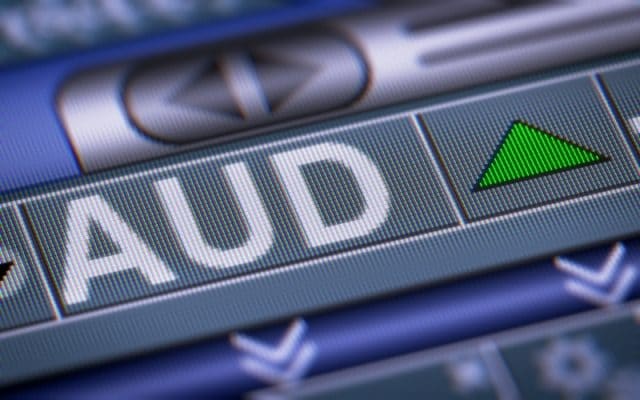- Australia has weathered the trade storm with China to increase wages in 2021.
- The UK’s unemployment rate falls.
The Australian dollar has gained 14.34% against the British pound from the 52-week high of 2.0868 recorded on April 2, 2020, to 1.7875 on February 24, 2021. Australia maximized Britain’s entanglement in the Brexit deal to initiate a quick recovery of business activities into 2021. Australia’s export of iron ore and coal in 2020 to China helped the former avoid going into recession at the pandemic’s peak despite the trade war. However, surging export data shows that China still needs Australia’s products. Great Britain, on its part, is still struggling with freight exports into the EU, putting a significant dent in the Brexit deal.
Higher wages
The Australian wage price index increased 0.6% in Q4 2020 (YoY). Many businesses survived the lockdown by cutting salaries due to cost-saving measures implemented to save them from the pandemic’s bite. The private sector-led the way in the annual wage rise by contributing 0.5%, while the public sector followed at 0.3%. Wages rose by 1.4% nationally as businesses struggled to return compensation to pre-COVID-19 levels. The Reserve Bank of Australia (RBA) projects a stagnant growth of the real-wage time as inflation falls to its target of 2-3%.
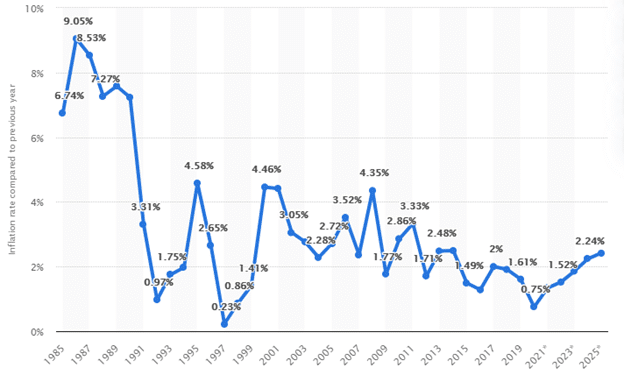
Even as inflation is projected to rise, employment numbers may fall in the year 2030 as the economy shifts into the digital world. In the next decade, Australian job numbers may shrink 11%, costing the economy 1.5 million jobs. Employment demand is expected from prominent data specialists, automation of processes, app developers, blockchain, and machine learning. Growth of new opportunities may reach 25%, with up to 1.7 million jobs created.
Slow hiring in the UK has caused the unemployment rate to increase by 5.1%. The UK lockdown slated to end in March 2021 has taken a toll on restaurants, shops, and other retail outlets.
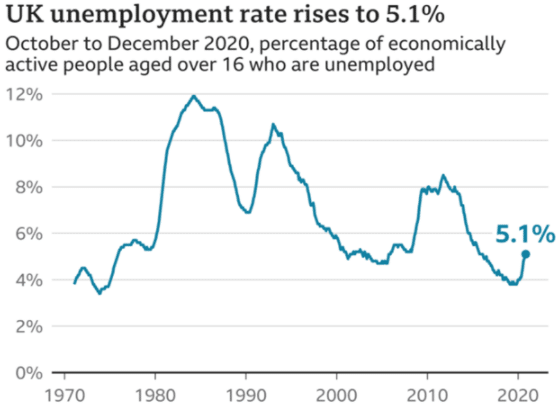
The EU has also been a vital trade partner to the UK, and the post-Brexit era is expected to take a grip on the pound’s dominance against major currencies such as the Australian dollar. As of 2019, exports from the UK to the EU reached £294 billion, representing 43% of all UK exports. In return, the EU exported goods worth £374 billion from the UK, representing 52% of all UK imports. Brexit was meant to heal this trade deficit that totaled to £80 billion into 2020. January 2021 saw British exports into the EU decline 68% as traders worked to acquaint themselves with new engagement rules. At this time, the GBP/AUD trading pair reached the annual low of 1.7442.
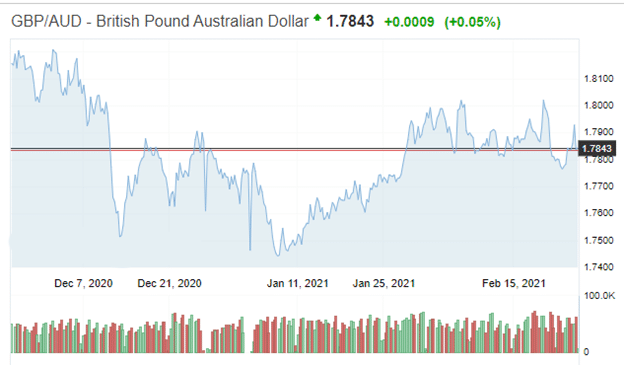
The pound’s gain in 2021 against the Australian dollar is proportional to the free-trade agreement that is expected to be completed by March 2021, when Britain is out of lockdown. The UK’s telecommunication companies are set to benefit from this agreement. It will also perpetuate free mobile roaming services for Britons traveling to Australia and lower tariffs for agricultural goods. The UK-Australian trade as of 2019 totaled £18.5 billion. The UK is keen to expand its trade boundaries to compensate for its deficit with the EU.
Technical analysis
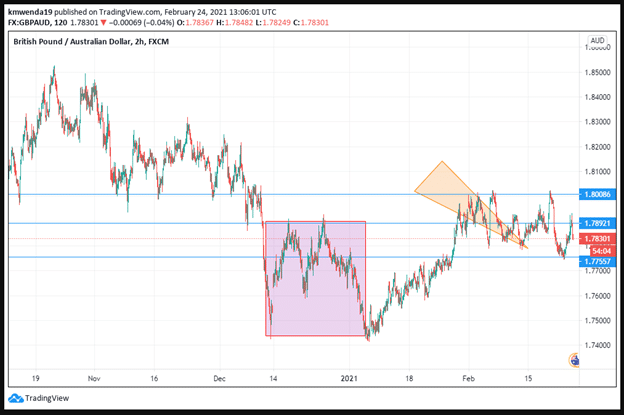
The GBP/AUD trading pair seems to have formed a rectangular bottom with support at 1.74211. Prices began a bullish pattern in 2021 as the pound gained strength against the Australian dollar. The descending triangle points to new support at 1.77557. The AUD’s strength may give resistance at 1.81251 in the short-term as we wait for Britain to end its lockdown.
